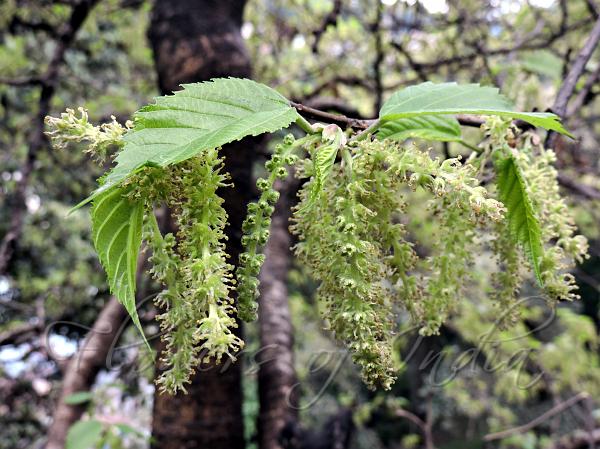|
| Himalayan Mulberry |
|

|

| File size | 771108 |
| Original date | 4/16/19 2:52 PM |
| Resolution | 2048 x 1536 |
| Flash | Flash did not fire, auto |
| Focal length | 7.1mm |
| Exposure time | 1/100s |
| Aperture | 3.3 |
| Focus Distance | |
| Metering Mode | Multi-segment |
| Camera make | NIKON |
| Camera model | COOLPIX P530 |
| Sensor type |
|
|
|
|
Photo: |
Botanical name: Morus serrata Family: Moraceae (Mulberry family)
Synonyms: Morus alba var. serrata, Morus pabularia
Synonyms: Morus alba var. serrata, Morus pabularia
Himalayan Mulberry is a large deciduous tree, up to 20
m tall. Stem can be upto 2-3 m in circumference, with reddish or
grey-brown, scaly bark on old trunk and smooth on younger branches,
tender shoots velvet-hairy. Leaves are carried on a velvet-hairy, 2-5
cm long leaf-stalk. Leaf-blade is ovate to broadly ovate, 5-15 cm long,
3-10 cm broad 3(-5)-nerved from the heart-shaped base, usually
3-lobed, margins coarsely toothed bisawtoothed, tip or apices of lobes
tapering-with a tail, veins hairy beneath; stipules linear-lanceshaped,
1.5-2.5 cm long, membranous. Male and female catkins occur on different
trees. Male catkins are 2.5-5 cm long hairy. Male flowers: sepals
elliptic-oblong, about 1.5 mm long, blunt, hairy stamens with basally
flattened filaments. Female catkins are cylindric, much shorter than
male, 0.5-1.5 cm long, excluding 3.6 mm long, vinous
flower-cluster-stalk. The compound fruit is fleshy, purple or
reddish-purple, 0.8-2.5 cm long, sweet, edible. The tree is frequently
cultivated for shade near temples or houses. It is lopped for fodder.
The leaves are used for feeding silkworms. The hard tough timber is
used for furniture and carving, toys, troughs and agricultural
implements. Himalayan Mulberry is found in the Himalayas, from Kashmir
to Himachal Pradesh to Nepal, at altitudes of 1200-2700 m.
Flowering: March-May.
| Identification credit: Anil Thakur | Photographed in Shimla, Himachal Pradesh. |
• Is this flower misidentified? If yes,